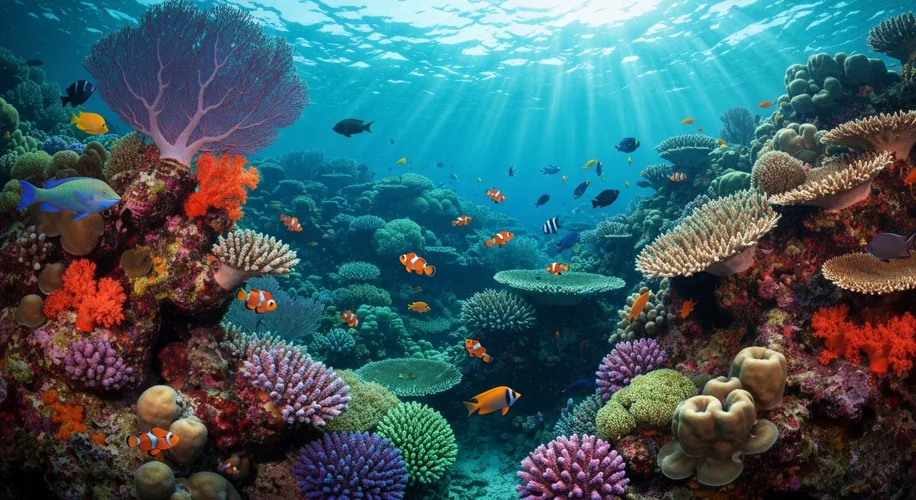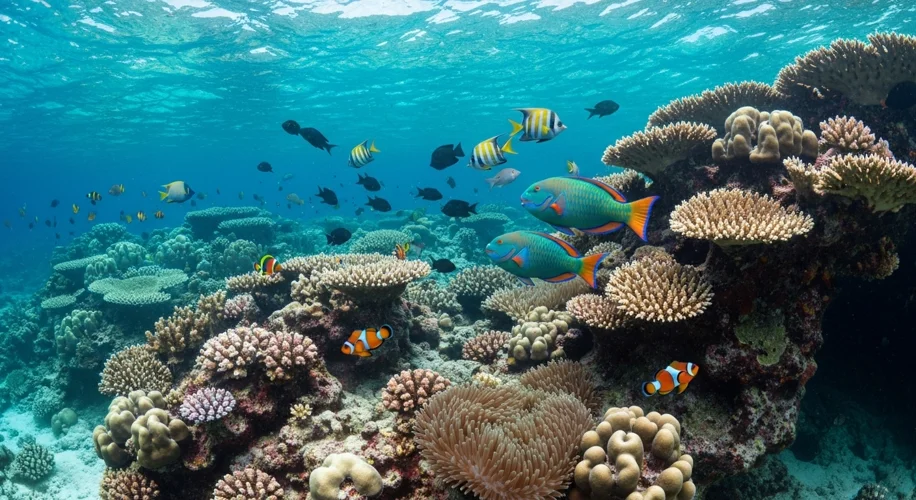Long before the stark warnings of climate change echoed through scientific journals and news headlines, the Great Barrier Reef, a jewel of the natural world, was already whispering tales of change. For millennia, this vast, vibrant ecosystem, stretching over 2,300 kilometers along the coast of Queensland, Australia, has been a testament to life’s resilience and diversity. Its story is not just one of coral and fish, but of an intricate, ancient dance between geology, biology, and, increasingly, humanity.
The genesis of the Great Barrier Reef is a story written in geological time, a slow, deliberate build-up over hundreds of thousands of years. It began with ancient shorelines and the gradual growth of coral polyps, tiny creatures that secreted calcium carbonate, forming the foundational structures that would eventually support an explosion of life. These architects of the reef built a city of limestone, creating a complex maze of habitats that provided shelter, food, and breeding grounds for an astonishing array of species. Imagine a bustling metropolis, not of concrete and steel, but of living coral, teeming with a kaleidoscope of fish, from the iridescent parrotfish to the majestic manta rays.

Indigenous Australians, the Traditional Owners, have shared a deep spiritual and cultural connection with this marine wonderland for over 60,000 years. For them, the reef was not merely a source of sustenance but a sacred entity, woven into their creation stories and daily lives. Their traditional practices, honed over countless generations, were often in harmony with the reef’s rhythms, a sustainable stewardship that allowed the ecosystem to flourish.
However, as the modern world expanded, so did its influence. The mid-20th century saw increasing human activity along the Queensland coast. Runoff from agricultural lands, carrying sediments and fertilizers, began to cloud the pristine waters, stifling the sunlight that corals need to survive. Overfishing, while not on the industrial scale seen today, also started to exert pressure, altering the delicate balance of predator and prey within the reef’s intricate food webs.
Early scientific observations, often conducted by dedicated marine biologists and passionate divers, began to note subtle shifts. Anecdotal reports spoke of changes in water clarity, alterations in fish populations, and even the first faint signs of coral bleaching – a phenomenon where corals expel the symbiotic algae living within their tissues, turning them ghostly white, often due to stress.
One pivotal, albeit often overlooked, period of stress occurred in the late 1970s and early 1980s. A combination of factors, including a surge in Crown-of-thorns starfish outbreaks (natural predators of coral that can decimate large areas when their populations boom) and increased coastal development, put significant strain on sections of the reef. These events, while localized and often recovered from naturally, served as early indicators of the reef’s vulnerability to environmental disturbances, even before the widespread understanding of anthropogenic climate change.
The true extent of the reef’s ecological history is a narrative of immense resilience, but also a stark foreshadowing of the challenges to come. The beauty and complexity that captivated early explorers and scientists were not static. They were the product of millennia of natural processes, delicately balanced and increasingly susceptible to the uninvited hand of human impact. The whispers of change from those earlier decades have now become urgent calls for action, as the Great Barrier Reef faces unprecedented threats from a warming planet, a story that continues to unfold with each passing year.

